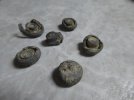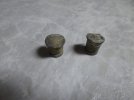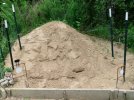burbank.jung
Active Member
This is where I am: I plan to cast hollow point bullets for testing using my MP 45-200, MP 40-160, and MP 38-125 soon, casting both round and hex hollow points and will test alloys of various amounts of tin to control the malleability. I'm using range retrieved pellet lead measured at 8bhn, jacketed bullet core lead measured at 9bhn, and .22lr lead measured at 13-15bhn. I've read that .22lr lead makes good hp bullets. Also, I think there is antinomy in all the lead of various amounts and work with the standard ingot alloys I have and as for the .22lr lead, there could be commercial hardcast lead in the mix. From my quick internet search, 2% is recommended and 3% is the maximum. I have water jugs and wet CA Election Voting Pamphlets to shoot at. The load I am using is from a previous test using range lead segregated as soft/medium/hard and chosen per caliber by chamber pressure. An accuracy load was determined. Now with softer bullet, I expect accuracy to decrease but I'll revisit the load later. The cast bullets are powder coated.
So here is my question. I'm trying to find the best amount of tin to add for a given retrieved lead source. Would 1%, 2%, 3% of tin per alloy be adequate or add an additional .5% so it would be original range lead cast / +.5%, +1.5%, +2%, +2.5%, 3%? Has anyone run a test like this before?
Thanks
So here is my question. I'm trying to find the best amount of tin to add for a given retrieved lead source. Would 1%, 2%, 3% of tin per alloy be adequate or add an additional .5% so it would be original range lead cast / +.5%, +1.5%, +2%, +2.5%, 3%? Has anyone run a test like this before?
Thanks



